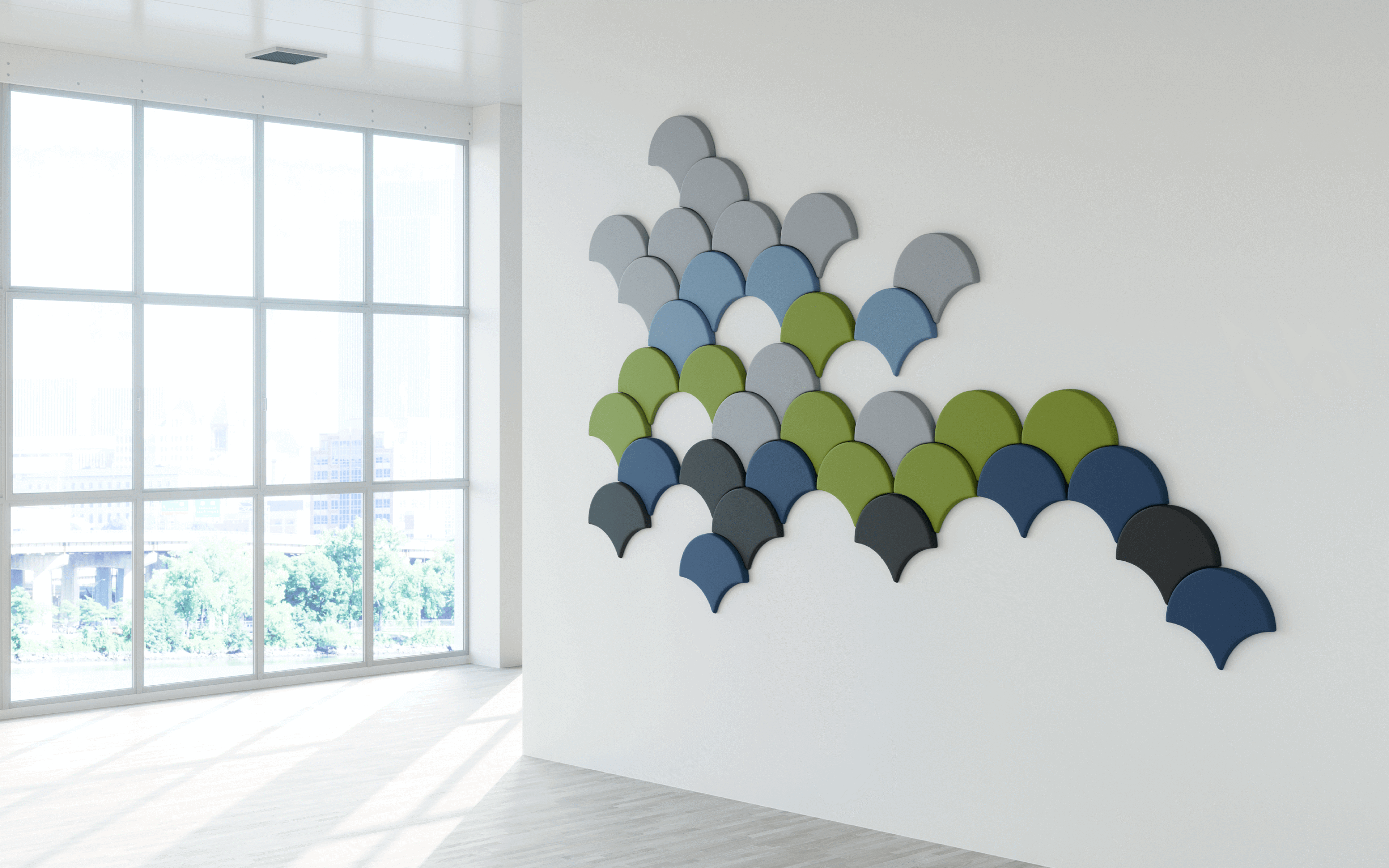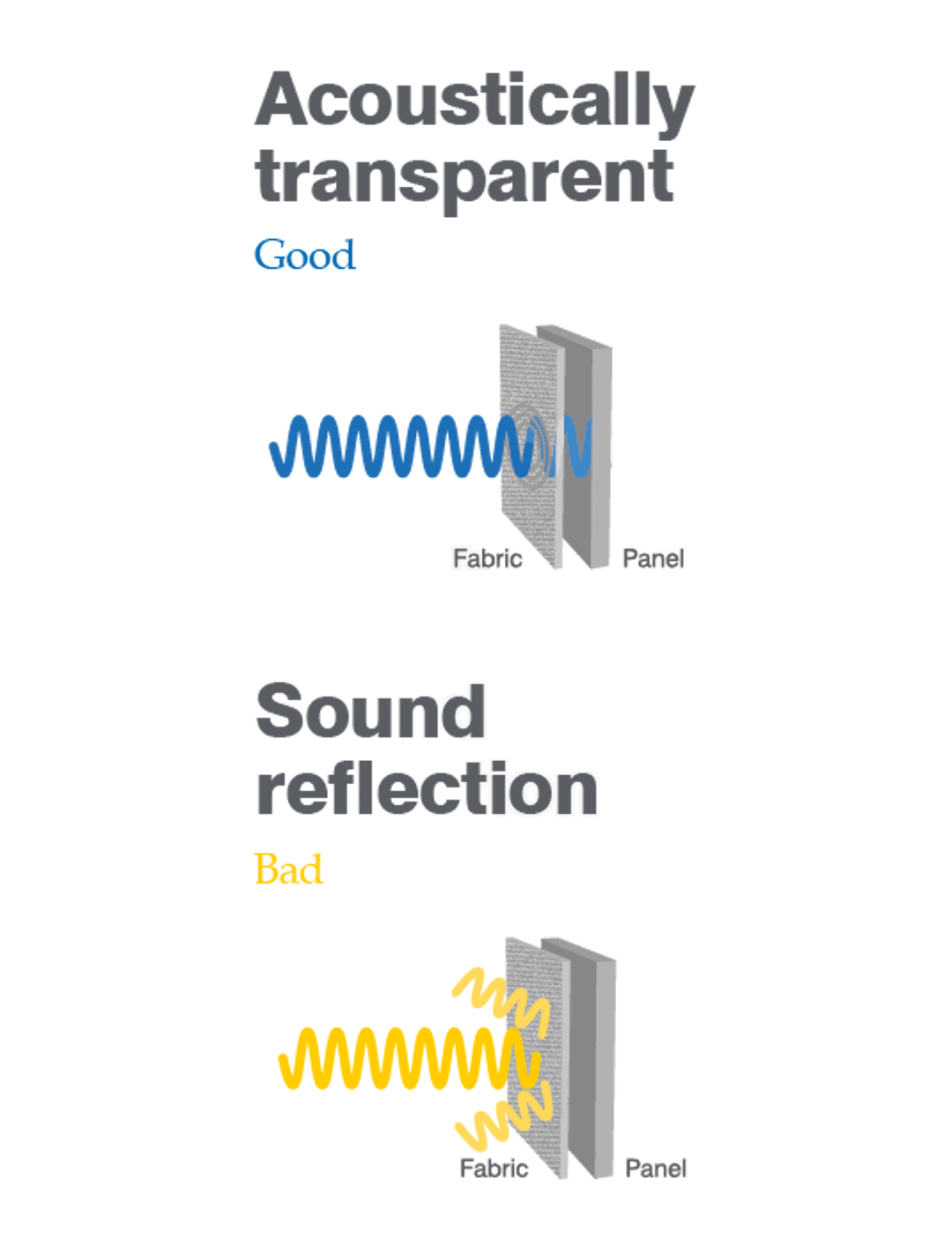An acoustic fabric allows sound waves to pass through without any interference, neither reflecting or absorbing. In effect, it is transparent – with the most highly transparent acoustic fabrics being used for loudspeaker coverings as a result of the minimal impact they have upon the sound that is being transmitted.
To demonstrate the extent to which a fabric posesses acoustic properties, it is tested under ISO 10534 Part 2 - this test measures the sound absorption of a fabric when it is applied to a 10cm thick sound absorbing foam. The results are then compared to the absorption of the foam in isolation, therefore demonstrating how well the fabric will complement the performance of an acoustic panel.
The data will illustrate that the sound passes through a transparent fabric and is absorbed by the foam, or that it is partially absorbed by the fabric before passing through to the foam.



